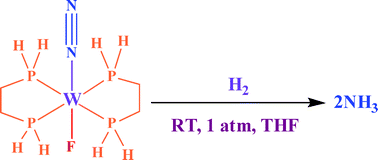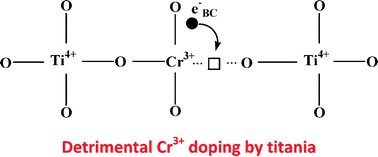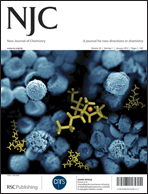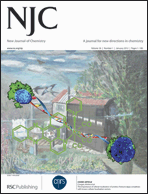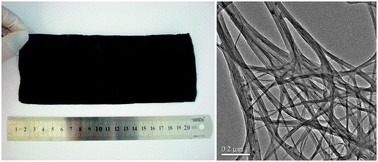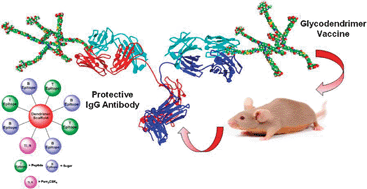This month sees the following articles in New Journal of Chemistry that are in the top ten most accessed:-
One-pot hydrothermal synthesis of graphene quantum dots surface-passivated by polyethylene glycol and their photoelectric conversion under near-infrared light
Jianhua Shen, Yihua Zhu, Xiaoling Yang, Jie Zong, Jianmei Zhang and Chunzhong Li
New J. Chem., 2012, 36, 97-101 DOI: 10.1039/C1NJ20658C
Synthesis of a pyridyl-appended calix[4]arene and its application to the modification of silver nanoparticles as an Fe3+ colorimetric sensor
Junyan Zhan, Long Wen, Fajun Miao, Demei Tian, Xiaolei Zhu and Haibing Li
New J. Chem., 2012, Advance Article DOI: 10.1039/C2NJ20776A
Generation of metallosupramolecular polymer gels from multiply functionalized grid-type complexes
John George Hardy, Xiao-yu Cao, Jack Harrowfield and Jean-Marie Lehn
New J. Chem., 2012, Advance Article DOI: 10.1039/C2NJ20898A
Photophysical property trends for a homologous series of bis-ethynyl-substituted benzochalcogendiazoles
Benjamin A. Coombs, Benjamin D. Lindner, Robert M. Edkins, Frank Rominger, Andrew Beeby and Uwe H. F. Bunz
New J. Chem., 2012, Advance Article DOI: 10.1039/C2NJ20847D
MOFs, MILs and more: concepts, properties and applications for porous coordination networks (PCNs)
Christoph Janiak and Jana K. Vieth
New J. Chem., 2010, 34, 2366-2388 DOI: 10.1039/C0NJ00275E
Porphyrin-functionalized Fe3O4@SiO2 core/shell magnetic colorimetric material for detection, adsorption and removal of Hg2+ in aqueous solution
Lei Sun, Yaoxian Li, Mingda Sun, Hengguo Wang, Shufei Xu, Chaoqun Zhang and Qingbiao Yang
New J. Chem., 2011, 35, 2697-2704 DOI: 10.1039/C1NJ20307J Cπ interaction of non-hydrogen bond type
Zhenfeng Zhang, Hongbo Tong, Yanbo Wu and Guisheng Zhang
New J. Chem., 2012, 36, 44-47 DOI: 10.1039/C2NJ20903A
PEG-dendritic block copolymers for biomedical applications
Ana Sousa-Herves, Ricardo Riguera and Eduardo Fernandez-Megia
New J. Chem., 2012, 36, 205-210 DOI: 10.1039/C2NJ20849K
Piezofluorochromism and morphology of a new aggregation-induced emission compound derived from tetraphenylethylene and carbazole
Xie Zhou, Haiyin Li, Zhenguo Chi, Xiqi Zhang, Jianyong Zhang, Bingjia Xu, Yi Zhang, Siwei Liu and Jiarui Xu
New J. Chem., 2012, Advance Article DOI: 10.1039/C1NJ20782B
Ln(iii)-cored complexes based on boron dipyrromethene (Bodipy) ligands for NIR emission
Jung Ho Ryu, Yu Kyung Eom, Jean-Claude G. Bünzli and Hwan Kyu Kim
New J. Chem., 2012, Advance Article DOI: 10.1039/C2NJ20786A
Why not take a look at the articles today and blog your thoughts and comments below.
Fancy submitting an article to New Journal of Chemistry? Then why not submit to us today or alternatively email us your suggestions.












